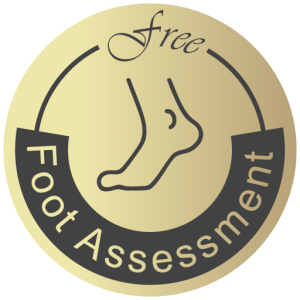



Plantar Fasciitis Pain is one of the most common conditions people suffer from regarding foot problems worldwide. The plantar fascia, a strong fibrous tissue extending from the heel bone to the toes, plays a vital role in supporting the foot’s arch and absorbing shocks from walking, running, and daily movement. In this article, we will explore the various causes leading to plantar fasciitis.
Plantar fasciitis pain typically arises from repetitive stress or micro-tears in the plantar fascia tissue, a thick band of connective tissue that runs from the heel bone to the base of the toes. The pain often manifests as sharp stabs in the heel area and is usually worse in the morning with the first steps or after periods of rest.
Factors that may increase the risk of developing this condition include excessive high-impact sports activities, prolonged standing on hard surfaces, obesity and weight gain, wearing unsuitable shoes lacking support, and having flat feet or very high arches, which increases mechanical stress on the fascia. Early diagnosis and identification of causes help in developing an effective treatment plan.
Plantar fasciitis treatment aims to reduce inflammation, alleviate pain, and restore normal foot function as quickly as possible. Common and effective treatment options that can be followed include:
Choosing appropriate footwear is an essential and crucial part of managing plantar fasciitis pain. Plantar fasciitis shoes should provide adequate support and cushioning to reduce stress on the foot. These shoes typically feature:
Plantar fascia insoles, or custom orthotics for plantar fascia, can provide additional support and significant pain relief. These insoles work to support the foot’s arch and provide extra cushioning for the heel, reducing stress on the plantar fasciitis and helping to distribute pressure better. Ready-made types are available, as well as custom-fitted ones based on foot size and shape.
These insoles can be used in various types of footwear, including athletic shoes, dress shoes, and work shoes, to improve daily comfort and support for the affected foot and reduce impact on the fascia. Periodically changing the insoles ensures their continued effectiveness in providing the required support.
In addition to shoes and insoles, other products can help alleviate the uncomfortable symptoms of plantar fasciitis and promote the healing process. These include:
The most suitable ones can be chosen based on the severity of the condition and personal preferences, and after consulting specialists if necessary to achieve the best results. Get rid of heel and plantar fasciitis pain now with Archline Flip Flop. Order yours today and start your journey to perfect foot comfort!
Dealing with Plantar fascia Pain is a process that requires patience and adherence to the treatment plan. Supportive products can significantly contribute to alleviating symptoms and speeding up the healing process, along with the importance of consulting a specialist to determine the most appropriate treatment.
Recovery time varies from person to person and depends on the severity of the condition and adherence to treatment. In mild cases, a patient may feel improvement within a few weeks, while more severe cases may take several months for complete recovery. Patience and follow-up are important.
Yes, stretching exercises are a very essential and effective part of treating plantar fasciitis. Stretching the calf muscles and the plantar fascia itself can help reduce tension and pressure on the fascia, improve flexibility, and significantly alleviate pain when practiced regularly.

